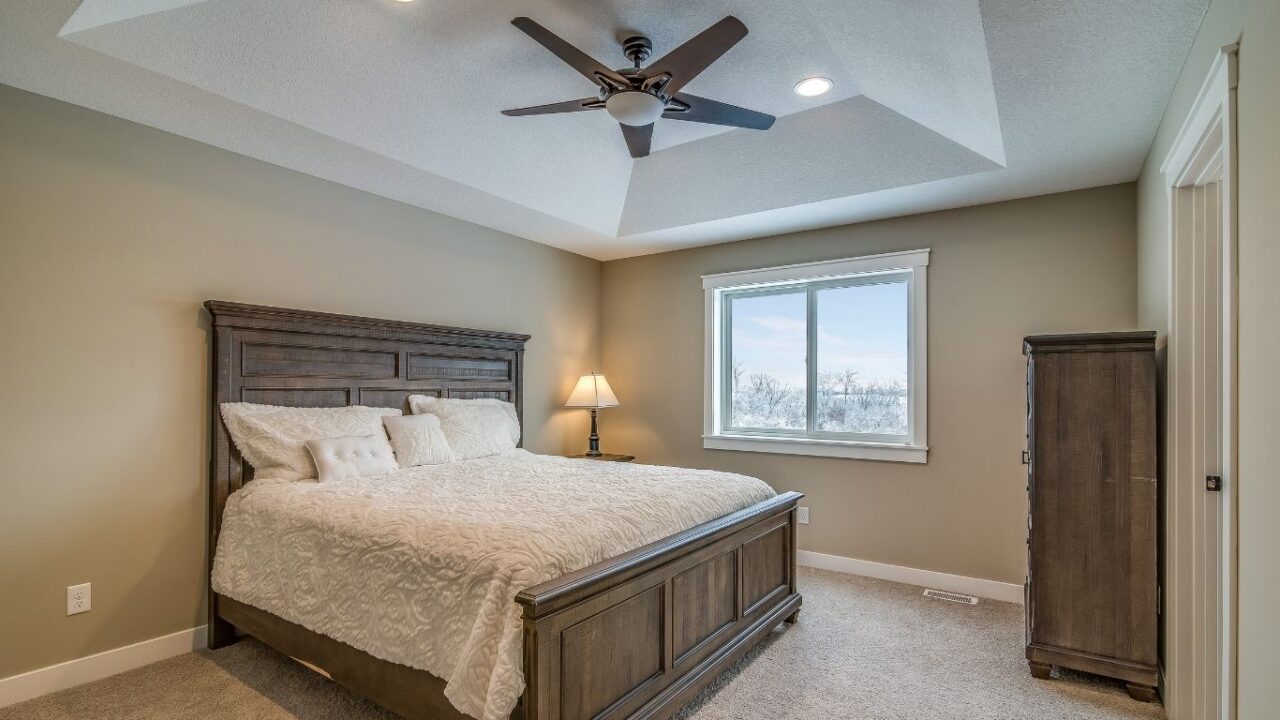Ceiling fan size isn’t just about looks — it’s about airflow, comfort, and efficiency.
A fan that’s too small won’t circulate enough air, while one that’s too large can overwhelm the space, cause wobbling, or even waste energy.
Getting the right size makes your room feel cooler in summer, warmer in winter, and perfectly balanced all year long.
Why Fan Size Matters
Every fan creates a “cone” of moving air beneath it. If that cone doesn’t cover your room properly, parts of the space will feel stagnant — or drafty.
The goal is to pick a fan that moves air across the whole room without overpowering it.
Sizing your fan correctly improves:
-
Comfort: Balanced airflow that actually reaches you
-
Energy efficiency: Lower speeds, same comfort
-
Noise control: A properly sized fan doesn’t need to run on high all the time
-
Room balance: Visually fits your ceiling height and layout
How to Measure Your Room
To find the right size, you first need your room’s square footage.
👉 Length × Width = Square Feet
For example: 10 ft × 12 ft = 120 sq ft
Then match your result to the right fan size using the chart below.
Ceiling Fan Size Chart
| Room Size (Square Feet) | Recommended Fan Size (Blade Span) | Room Examples |
|---|---|---|
| Up to 75 sq ft | 29″–36″ | Bathrooms, small kitchens, laundry rooms |
| 76–100 sq ft | 36″–42″ | Small bedrooms, offices, nurseries |
| 101–225 sq ft | 44″–52″ | Bedrooms, dining rooms, average living rooms |
| 226–400 sq ft | 52″–60″ | Large living rooms, master bedrooms, basements |
| 400+ sq ft | 60″–84″+ | Great rooms, vaulted spaces, open-concept areas |
If your room is long or irregular, consider two smaller fans instead of one big one for even circulation.
When a Fan Is Too Small
If you install a fan that’s undersized for the room:
-
You’ll barely feel airflow beyond the fan’s center.
-
You’ll run it on high constantly — creating more noise and energy waste.
-
Corners of the room may stay hot or stuffy.
In short, it’ll look fine but won’t feel like it’s doing anything.
Pro tip: It’s better to go slightly larger than too small — as long as you have enough clearance from walls and furniture.
When a Fan Is Too Big
Bigger isn’t always better. An oversized fan can:
-
Create too much airflow in small spaces, leading to drafts or discomfort
-
Wobble or strain the mounting if the ceiling box isn’t fan-rated
-
Overpower the look of a smaller room, making it feel crowded
-
Draw air away from light fixtures, creating uneven lighting
If your ceiling is 8 ft or lower, make sure the blades will stay at least 7 feet from the floor — or choose a flush-mount (hugger) fan for safe clearance.
Ceiling Height and Fan Size Go Hand in Hand
Ceiling height changes how large a fan feels and performs:
-
Low ceilings (8 ft): Stick with fans under 52″ and flush-mount styles.
-
Standard ceilings (9–10 ft): 52″–60″ fans with short downrods are ideal.
-
High/vaulted ceilings: Large 60″–84″ fans or dual setups with longer downrods keep air circulating where you need it most.
Blade Pitch and Motor Quality Matter Too
Two fans with the same size blades can perform completely differently depending on the motor strength and blade pitch (the angle of the blades).
-
Steeper pitch (12–15°) moves more air but needs a stronger motor.
-
Shallow pitch (8–10°) is quieter but less powerful.
That’s why cheap fans often look big but don’t move much air — they simply don’t have the motor to support proper blade angles.
How to Check If a Fan Has Good Airflow
Look for the CFM rating (Cubic Feet per Minute).
This tells you how much air the fan moves at top speed:
-
Small rooms: 2,000–4,000 CFM
-
Medium rooms: 4,000–6,000 CFM
-
Large rooms: 6,000–10,000+ CFM
A higher CFM means more airflow per watt — so you get better comfort without cranking up speed or noise.
Pro Tip: Measure More Than the Room
Don’t forget to check for clearance around where the fan will go.
Measure from the fixture’s center to the nearest wall, door, or cabinet.
You want at least 18–24 inches of space between the blade tips and any obstruction.
No one wants to discover their brand-new fan blocks a closet door halfway through installation.
Final Thoughts
The right-sized ceiling fan can make your room feel comfortable and evenly cooled without overworking itself — or your HVAC system.
Start with your square footage, check your ceiling height, and don’t be afraid to go slightly larger for open layouts.
Need help choosing or installing your ceiling fan?
Colin Can Help handles everything from fan selection to installation for homeowners across Northeast Ohio — safely, cleanly, and perfectly balanced every time.

